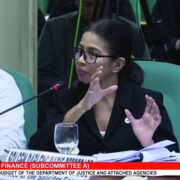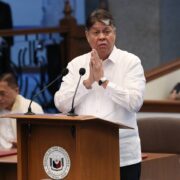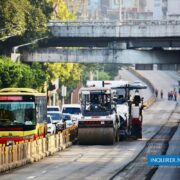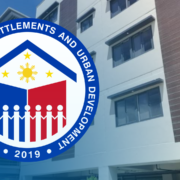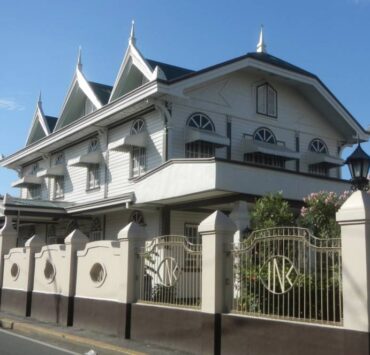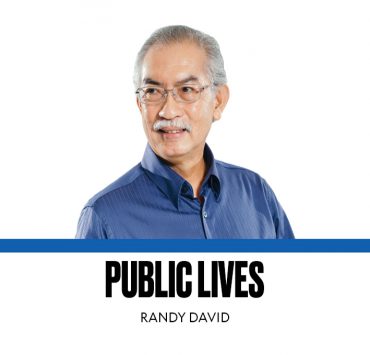Anti-commuter MMDA plans

The Metro Manila Development Authority (MMDA) appears to never run out of wild ideas to solve the notorious traffic problem in the capital’s major thoroughfare—often at the expense of the commuting public.
The latest proposal is to remove the Edsa busway, a lane that served more than 5 million passengers last month alone, because it is “repetitive” of the railway route. MMDA assured that the plan would be implemented only once the capacity of the Metro Rail Transit (MRT-3) had been expanded. MRT-3 is undergoing rehabilitation and maintenance to increase its capacity to half a million passengers daily, and this is expected to be completed by June.
Just last month, MMDA proposed moving work hours an hour earlier for government workers in the National Capital Region to help ease traffic that is seen to worsen with the planned rehabilitation of Edsa starting in March.
The agency expects that the busway phaseout will be completed along with the Edsa overhaul ahead of the Philippines’ hosting of the Southeast Asian Nations (Asean) Summit in 2026. Such a plan only indicates that it is mainly for window-dressing to impress our Asean neighbors and important guests, and the long-term implication on the welfare of bus users has never been considered.
Height of insensitivity
MMDA chair Romando Artes said the busway will be used as a “special lane”—for Asean delegates during the summit, and for “high occupancy vehicles” or private vehicles with three to four passengers the rest of the time.
“Imagine one additional lane that can be used by vehicles. Not because we’re car-centric, but it will definitely help decongest the road. It will just be repetitive if the MRT can accommodate the passengers; we don’t see the need for buses,” Artes said.
Artes’ statement is the height of insensitivity to bus commuters. Civil society organizations are absolutely right in criticizing the plan that they said does not make sense because what can be more “high occupancy” than buses that can transport an average of 46.5 passengers compared to private vehicles that can only carry an average of 1.7 passengers?
While MMDA’s proposal is backed by Department of the Interior and Local Government Secretary Jonvic Remulla, the Department of Transportation (DOTr) appears to have swiftly come to the defense of the busway by extolling its efficiency as a public road transport system in a statement posted on its Facebook page a few hours after the MMDA briefing.
Filipino toxic trait
“The Edsa busway is seen as a crucial step toward a progressive public transportation system with 23 stations operating 24/7, affording commuters a safe and reliable option for transport,” DOTr said.
It noted that over 63 million commuters traveled along the Edsa busway last year and served more than 5.5 million passengers in January, averaging 177,000 daily commuters “who reached their destinations conveniently, safely and quickly.”
The DOTr is also awaiting the result of a feasibility study on how best to improve the busway tapping private sector technical and financial expertise. “The goal is to improve commuter experience without worsening existing traffic conditions,” it said.
The busway has invited a lot of controversies because of private vehicles that have been apprehended using it, many of them owned by politicians the latest being Quezon City Rep. Ralph Tulfo. Public outrage, however, has not stopped private vehicle owners from attempting to use the busway especially when traffic is heavy on the other lanes, probably thinking that no one is using it anyway—so in the Filipino toxic trait of “diskarte,” why not?
But the idea of having a busway is to reduce traffic congestion by providing a separate lane for buses that carry more passengers than cars—not for these cars to use the lane to avoid traffic. By introducing an efficient transport system, more people can then be encouraged to take the bus—and this can eventually lead to reducing car dependency by increasing public transport ridership.
Essential service
The busway route also complements the rail system—it reaches destinations that trains do not serve. MRT-3, with 13 stations, runs from North Avenue in Quezon City to Taft Avenue in Pasay City, while the Edsa Bus Carousel which has 23 stops runs from Monumento in Caloocan City to PITX in Parañaque City. Trains operate on fixed hours while buses are on a 24-hour schedule.
The country’s transport system must cover the last mile—so who does not need the buses?
Unlike privileged government officials, majority of Filipinos do not own cars or have chauffeurs who drive them to work. The bus transport system is an essential service and should not be sacrificed for the comfort of a few.
Government officials should also try to be in the shoes of the regular Filipino commuter to experience what they go through in a day. That might help them get insights on how to improve the service instead of coming up with harebrained ideas that do not serve the general public.






